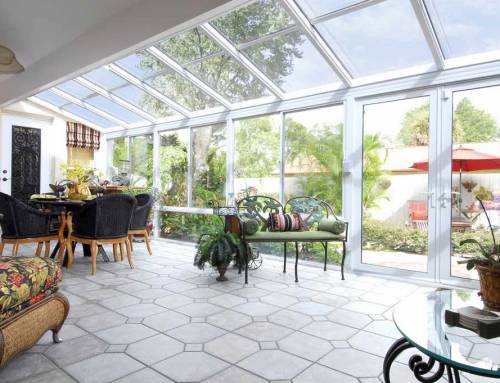Article posted in the Tri-City Voice
Let a sunroom enlighten you
By David R. Newman
The next best thing to being outside, enjoying our Bay Area weather, is to be in a room that feels like youÕre outside. A sunroom is the perfect addition for those seeking a space that is more connected to their natural surroundings, without all those pesky insects. ÒItÕs a space like no other,Ó says Glenn Skidmore, who has run California Sunrooms in Walnut Creek for over 25 years. ÒIt can really feel like youÕre outside. To experience the rain or the stars at night in a sunroom is wonderful.Ó
Not only can a sunroom increase the value of your home (many real estates experts say that the return on investment (ROI) for a professionally built sunroom can be from 60 percent to 80 percent), but it can often boost curb appeal, complementing the natural look of a house.
Many homeowners add a sunroom to their house when they need more space. ItÕs more affordable than a regular room addition, takes less time to build, and is highly versatile. A sunroom can be used as a playroom, game room, office, spa, breakfast room, exercise room, and on and on. Truly the possibilities are endless.
Indeed, modern sunrooms have come a long way from the fenced in wooden porches of yesteryear. Made from aluminum or vinyl framing, they are elegant and sleek, requiring no painting or maintenance, and are built to last. Most sunrooms are insulated, and many have HVAC units to regulate the temperature.
Of course, probably the most important component in a sunroom is the glass. Options include tempered glass, like the glass used in car windshields, that will not shatter upon impact, and Low-E (low emission) glass that is chemically coated to prevent harmful ultraviolet (UV) light from passing through. Glass for sunrooms can be single, double, and even triple paned. The more panes, the better the insulation.
According to Skidmore, most Bay Area residents prefer a four-season sunroom. This means building an addition that has built in insulation and energy efficient windows made from double- or triple-paned glass, reducing the loss of radiant heat in the winter and reducing heat and UV rays in the summer. Many also have a HVAC unit. This type of sunroom can be used year round.
For those on a budget, a three-season sunroom might suffice. With less insulation, no HVAC unit, and single-paned glass or screens, the temperature in these rooms varies according to the weather, which may be okay for many.
Sunrooms come in all shapes and sizes. Roof styles can be flat or gently sloped, or have a high vaulted ceiling (known as cathedral style). Some roofs are solid, some have skylights, while others are made entirely of glass. A conservatory sunroom is a classic design based on Victorian architecture. And a solarium is an all glass sunroom with a curved or straight eave.
As with any home addition, building permits will be required. These can usually be obtained by the contractor. Skidmore estimates onsite construction to take between three to four weeks, less if building over an existing patio. Cost can range greatly depending on size and materials, with an average price of $30,000 to $60,000.
Also, there are often certain tax advantages to a sunroom, compared to a standard room addition. Most residential building codes define sunrooms as additions with a high amount of glazing area, from 75 to 90 percent, in most cases. The differences in purpose, code, and design means that the new square footage attained by an addition of a sunroom is subject to a significantly lower tax assessment compared to the additional square footage attained through a standard room addition.
Being in a sunroom can truly be an enlightening experience, one that the whole family can enjoy.
For more information, contact California Sunrooms at (925) 250-7300 or visit
www.cal-sunrooms.com

